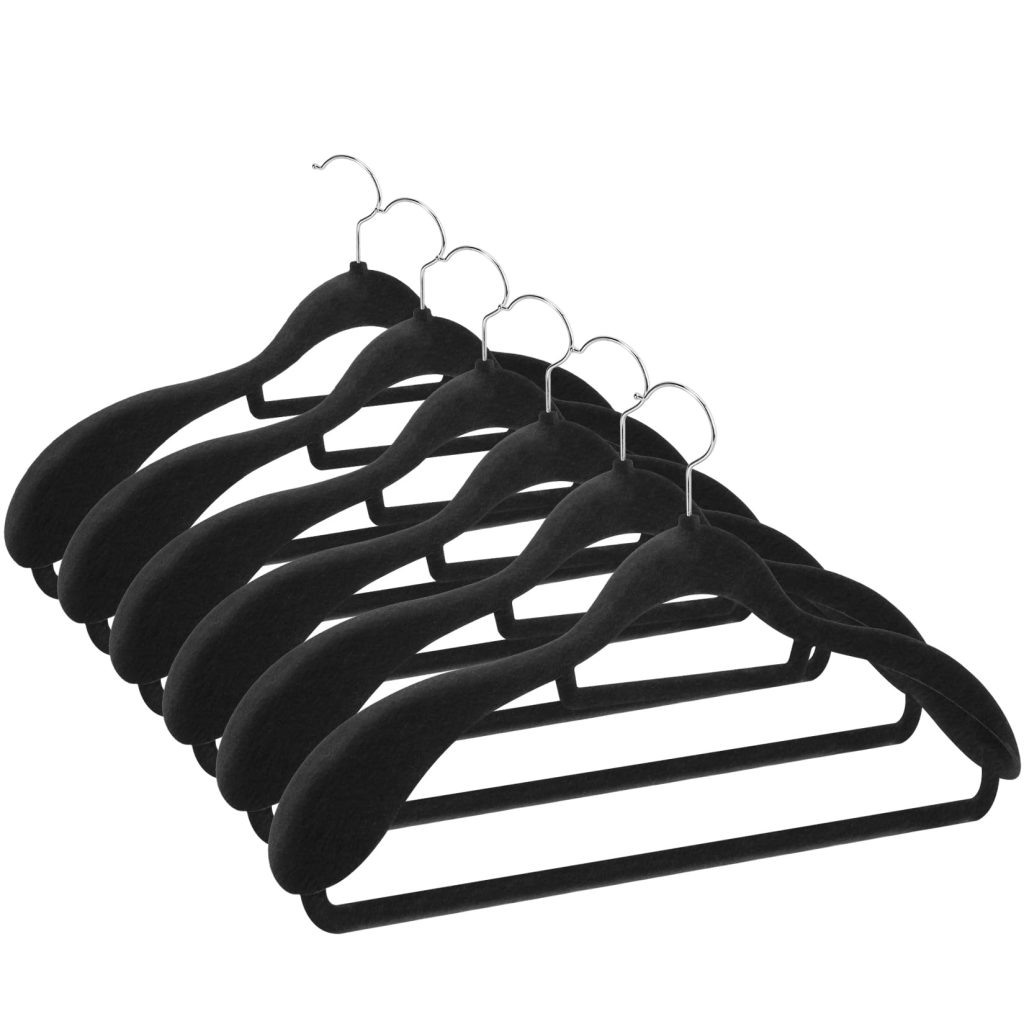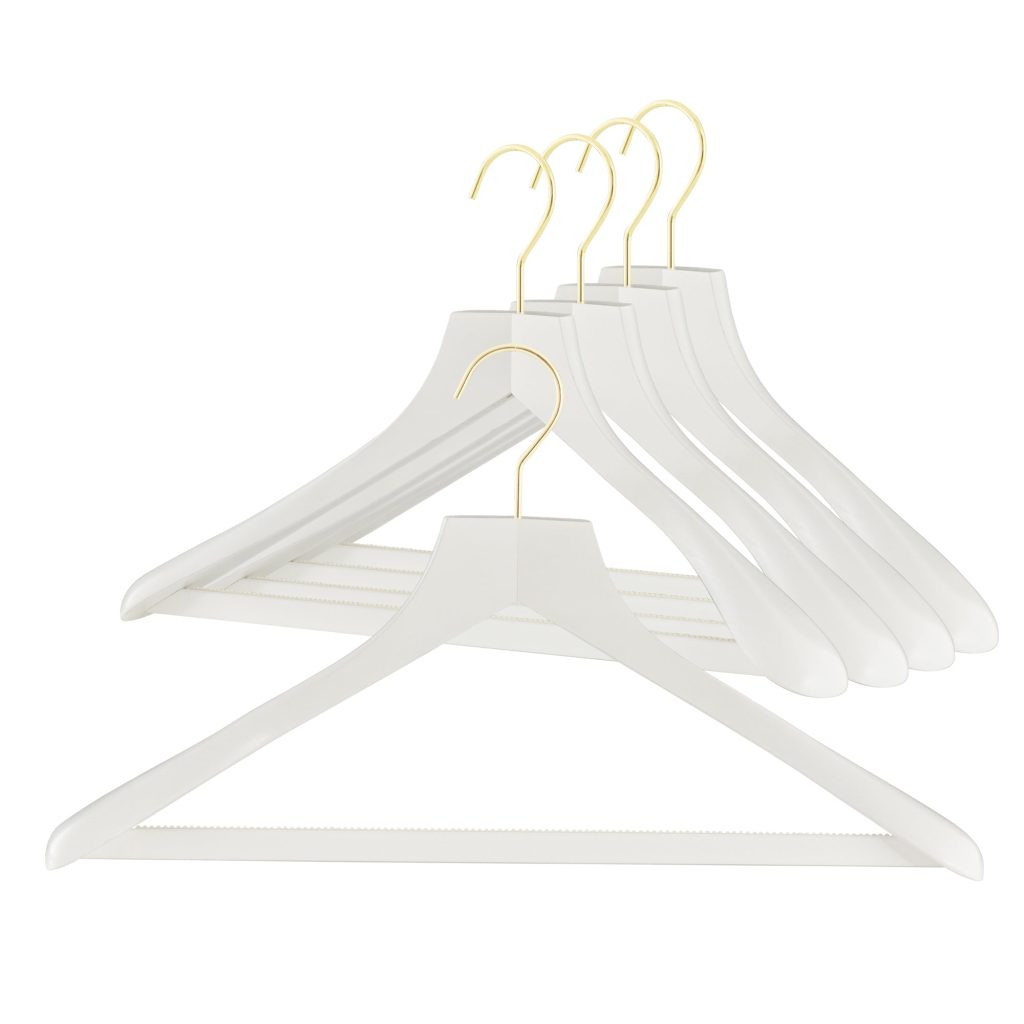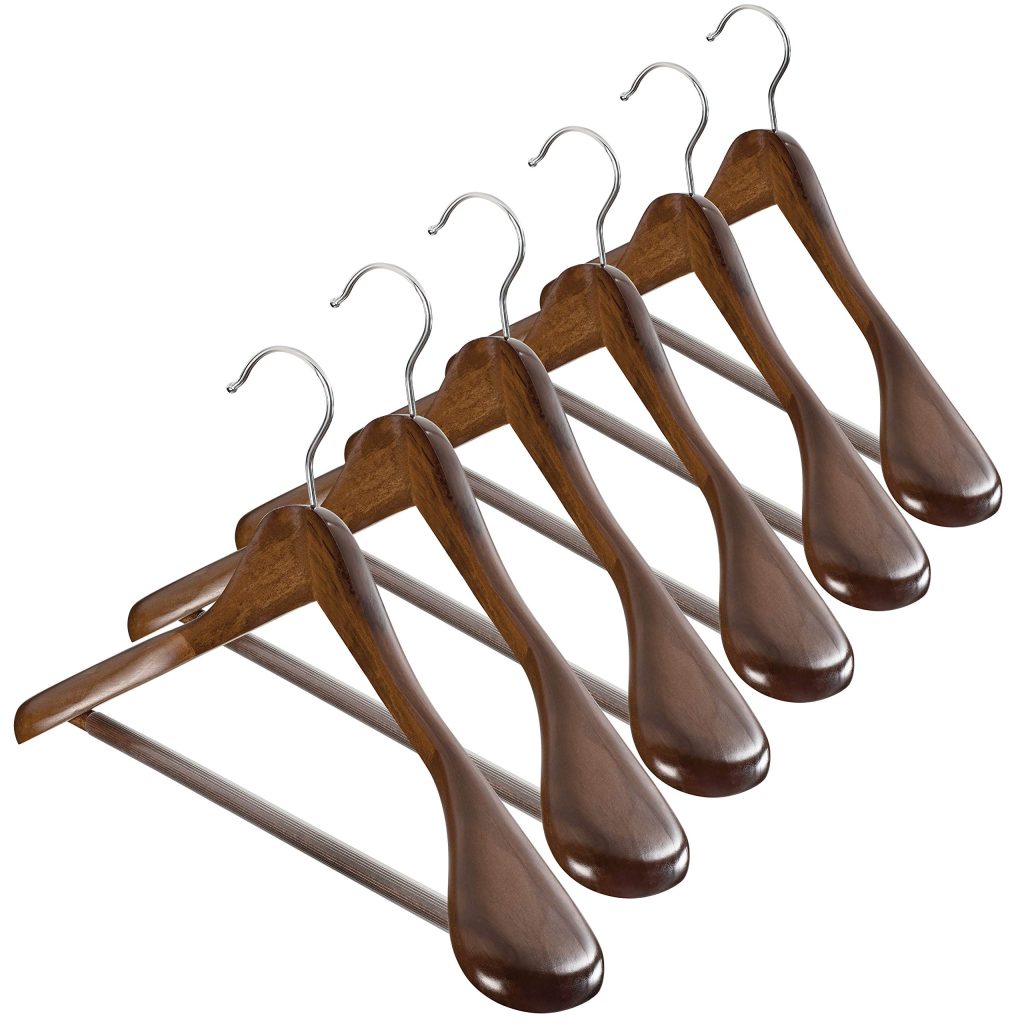Introduction
When it comes to organizing your closet, the dimensions of your hangers can significantly impact both the functionality and aesthetics of your space. Understanding standard hanger widths and how they align with your wardrobe needs can help you maintain a well-organized and efficient closet. This guide delves into the typical widths of various types of hangers and provides insights on choosing the best fit for your clothing.
Types of Hangers and Their Standard Widths
Standard Plastic Hangers
- Width: Typically range from 16 to 18 inches (40.6 to 45.7 cm).
- Description: These are among the most common hangers, designed to fit a wide range of clothing types. They often feature notches for straps and a slim profile to maximize closet space.
Wooden Hangers
- Width: Usually between 17 and 19 inches (43.2 to 48.3 cm).
- Description: Wooden hangers are sturdier and often used for heavier garments like coats and suits. Their wider width helps maintain the shape of the garment and prevents shoulder dimples.
Slimline Hangers
- Width: Approximately 14 to 16 inches (35.6 to 40.6 cm).
- Description: Designed with a thin profile, slimline hangers are ideal for maximizing closet space. They are commonly used for lightweight clothing and are often made from velvet or plastic.
Suit Hangers
- Width: Generally 18 to 20 inches (45.7 to 50.8 cm).
- Description: Suit hangers are wider to accommodate jackets and trousers without causing wrinkles. They often feature additional bars or clips for holding pants.
Children’s Hangers
- Width: Typically 10 to 14 inches (25.4 to 35.6 cm).
- Description: These hangers are designed for smaller garments and children’s clothing. Their narrower width ensures that smaller clothing items do not slip off.
 Factors to Consider When Choosing Hanger Widths
Factors to Consider When Choosing Hanger Widths
Type of Clothing
- Delicate Garments: For delicate or lightweight clothing, such as blouses and shirts, narrower hangers or slimline options can be suitable.
- Heavy Garments: Heavier items like coats and suits benefit from wider, sturdier hangers that provide additional support and prevent deformation.
Closet Space
- Compact Closets: If you have limited space, slimline hangers can help you optimize the available area by taking up less room.
- Spacious Closets: In larger closets, you have more flexibility to use a variety of hanger widths based on the type of clothing and personal preference.
Organizational Needs
- Uniformity: Using hangers of the same width and style can create a cohesive and organized look in your closet.
- Functionality: Consider whether your hangers offer additional features like non-slip surfaces or adjustable clips to meet your specific needs.
Practical Tips for Implementing Hanger Widths
Measure Your Closet Space
- Before purchasing hangers, measure the available space in your closet to ensure that the hangers you choose will fit comfortably.
Invest in Quality
- Opt for high-quality hangers that will last longer and provide better support for your clothing. This is particularly important for wooden or padded hangers used for more delicate or expensive garments.
Organize by Category
- Sort your clothing by category and use appropriate hangers for each type. For instance, use sturdy hangers for suits and slimmer options for casual wear.
Regularly Review Your Hanger Selection
- As your wardrobe changes, reassess your hanger needs to ensure that they continue to meet your organizational requirements.
Standard Hanger Widths
- Wire Hangers: These are the most basic and slender type of hangers, often found at dry cleaners. They usually have a width of around 0.15 to 0.2 inches (4 to 5 mm), excluding the hook. However, they might not be suitable for heavy or delicate clothing due to their thin structure.
- Plastic Hangers: Common plastic hangers used for everyday clothing like shirts and blouses typically measure about 17 to 18 inches (43 to 46 cm) in width from end to end, including the shoulders. The shoulder width itself is usually around 14 to 15 inches (36 to 38 cm), providing enough support without taking up too much closet space.
- Wooden Hangers: Known for their sturdiness and elegance, wooden hangers often have a wider shoulder span to accommodate jackets, coats, and suits better. A typical adult-sized wooden hanger’s shoulder width ranges from 18 to 20 inches (46 to 51 cm), ensuring that heavier garments maintain their shape.
- Children’s Hangers: Naturally, these are smaller to fit kids’ clothing. Children’s hangers can vary in width from about 12 to 14 inches (30 to 36 cm), depending on the age group they’re designed for.
- Specialty Hangers: For items like pants, skirts, or delicate garments like lingerie, specialty hangers come in various widths tailored to their specific needs. Pant hangers, for instance, might have clips that open up to about 9 inches (23 cm) wide, while padded hangers designed for delicate fabrics could be around 16 to 18 inches (41 to 46 cm) across to provide ample support without causing damage.
Factors Influencing Hanger Width
- Garment Type: Different types of clothing require different amounts of support. Heavy coats need wider hangers than lightweight tops.
- Material & Construction: Hangers made from thicker materials like wood will naturally have a wider presence than wire or slim plastic ones.
- Storage Space: Closet size and organization preferences also play a role. Narrower hangers allow more garments to be hung in limited spaces, but they might not provide adequate support for certain clothing items.
-
Design Features: Some hangers include additional features like non-slip coatings, hooks for accessories, or contoured shapes that can affect their overall width.
Types of Hangers and Their Widths
Hangers come in various types designed for specific garment needs. Understanding these types will help you determine which width is most suitable:
- Standard Plastic Hangers: Typically around 17-18 inches wide, they’re versatile but might not be ideal for heavier items.
- Wooden Hangers: Wider at about 19-20 inches, they provide better support, particularly for suits and coats.
- Slimline Hangers: Usually 15-16 inches wide, these are great space-savers for smaller closets or lighter garments.
- Children’s Hangers: Much narrower, averaging 12-14 inches, tailored to fit kids’ clothing sizes.
- Specialty Hangers: For items like pants, skirts, or dresses, widths vary significantly depending on the design.
How to Measure Hanger Width Accurately
To measure a hanger’s width correctly, follow these steps:
- Prepare Your Tools: You’ll need a tape measure or ruler for this task.
- Identify Measurement Points: Measure from the outer edge of one hook to the outer edge of the other hook. This gives you the total width of the hanger, including the hooks.
- Consider the Shoulder Span: For clothing-specific hangers (like those with contoured shoulders), measure the distance between the inner edges where the shoulders of a garment would rest. This ensures the hanger fits your clothes properly.
- Take Note of Thickness: While not a direct measurement of width, the thickness of the hanger can affect how well it supports heavier garments. Consider this when choosing hangers for coats or heavy sweaters.
Choosing the Right Size Hanger for Your Wardrobe
When selecting hangers based on their width, consider the following factors:
- Closet Space: If you have limited space, opt for slimline hangers. For spacious closets, wider hangers like wooden ones can provide better support without compromising organization.
- Garment Type: Heavy coats and suits require sturdier, wider hangers, while delicate blouses or tops can be hung on narrower, gentler options.
- Material Compatibility: Some fabrics need extra care; padded hangers prevent stretching and creasing on delicate items.
- Uniformity: For aesthetic appeal and efficient use of space, try to maintain consistency in hanger sizes throughout your closet.
Conclusion
Selecting the right hanger width is a crucial aspect of maintaining an organized and functional closet. By understanding the standard widths for various types of hangers and considering factors such as clothing type and closet space, you can make informed choices that enhance both the appearance and efficiency of your wardrobe. Whether you opt for slimline, wooden, or specialty hangers, the goal is to create a system that keeps your clothing in excellent condition and your closet looking its best.



